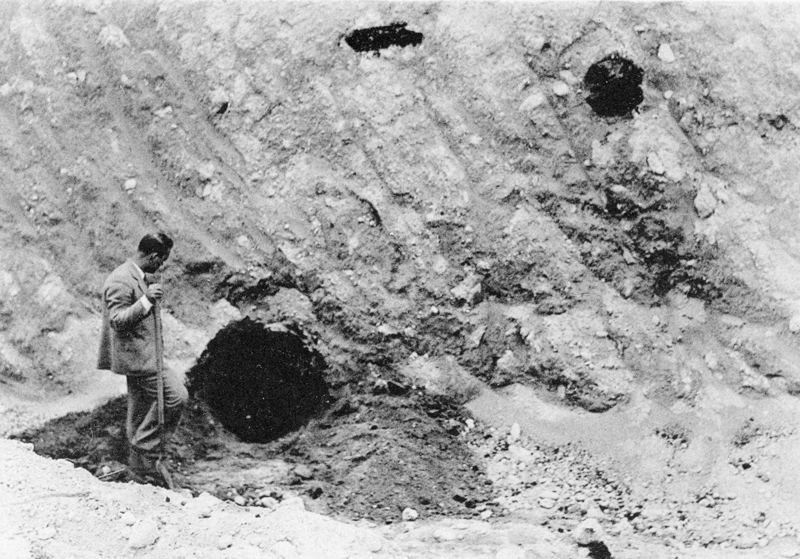The Geology of Crater Lake National Park, OregonWith a reconnaissance of the Cascade Range southward to Mount Shasta by Howell Williams
The Climax: Culminating Explosions of Pumice and Scoria
The Glowing Avalanches: Pumice and Scoria Flows
Abundance of Charred Logs
Most of the pumice fall, certainly most of that which fell beyond the base of Mount Mazama, was too cool when it came to earth to set fire to the vegetation. Accordingly there is little charred wood in the deposits except close to the caldera. In the pumice flows, on the other hand, charred logs are abundant, for the temperature of the material was much higher, and the ejecta, not being projected into the air, cooled slowly. Trees entombed in the pumice were gradually carbonized. Even at the snout of the Rogue River flow, charred logs up to 3 feet in diameter are quite common.
Small twigs and branches of charcoal do occur at the base of the flows in the canyons on the south side of Crater Lake, but they are rare. Indeed, nowhere within the limits of the park is charred wood common. But beyond, particularly along the Rogue River and wherever deep excavations have been made in the flats along the Dalles-California highway, charcoal logs may be collected in large numbers (plate 15, figure 3). When the eruptions took place the upper slopes of Mount Mazama must therefore have been almost free of vegetation. Trees were only plentiful below about 4500 feet, and even there they cannot have been as closely spaced as they are today. Had the forests been as thick as they are now, the flows could not have spread as far as they did, for their energy would have been quickly dissipated.
|
Plate 15. Fig. 3. Charcoal logs in deposits of a pumice flow, on Diamond Lake highway, a mile above the Union Creek junction. (Photograph by National Park Service.) |
***previous*** — ***next***


